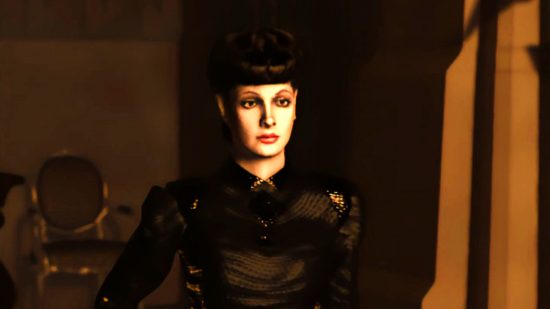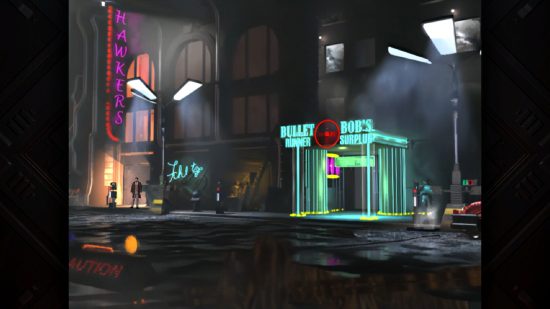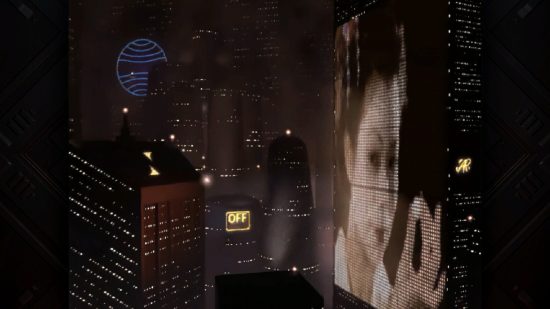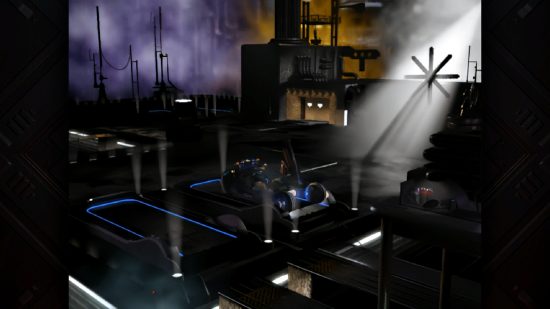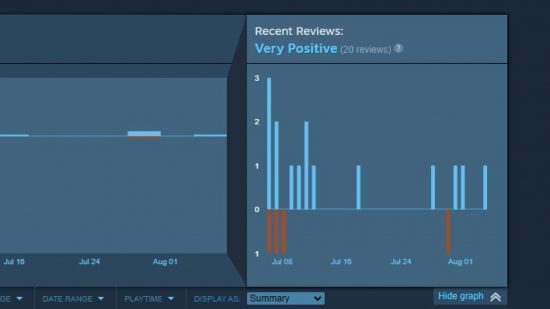June of this year saw the fortieth anniversary of Blade Runner, Ridley Scott’s genre-defining cyberpunk film. Nightdive Studios had targeted the anniversary for the launch of its remake of the Blade Runner adventure game, a beloved classic developed by Westwood Studios and originally released in 1997. Launch day arrived on June 23, Blade Runner: Enhanced Edition went up for sale, and the reviews began trickling in. They were not good.
“I’ve only played for 15 minutes and immediate impressions are absolutely awful,” wrote one Steam reviewer. Another said they were disappointed with Nightdive: “I sincerely cannot imagine anyone there looking at this and thinking it was acceptable.”
Nightdive is a developer with a lot of experience with remasters and re-releases of old PC games. The studio has handled the modern re-releases of Turok, Blood: Fresh Supply, Quake, Doom 64, and dozens of others. Its track record with these is remarkably strong: almost all the games Nightdive has updated have at least 90% positive user reviews on Steam. So what went wrong with Blade Runner: Enhanced Edition?

We spoke with Nightdive’s director of business development, Larry Kuperman, and Dimitris Giannakis, the lead producer on Blade Runner: Enhanced Edition, about why this latest remaster launched in the state it did, and what they’re doing to fix it.
“The responsibility for the ship date and, in retrospect, the failure to change the ship date resides 100% with me,” Kuperman tells us flatly. “The ship date was picked because it aligned with the 40th anniversary of the movie – that seemed that it would be something that would be a really cool thing to do for the fans.”
At launch, Blade Runner: Enhanced Edition was plagued with a host of minor but nonetheless disruptive issues. PC players in particular balked at some of the AI-assisted smoothing used to render old FMV cutscenes in 60 fps, and at the lack of a 16:9 aspect ratio.
“I think it was more of a death by a thousand cuts,” Giannakis says. “We had a lot of small things that were kind of upsetting people or bothering people about the game. I wouldn’t say there was any one major showstopper – we heard feedback about things like, ‘we don’t like the border that you have, can we turn that off?’ Or ‘there’s no brightness settings in the game, can we have that?'”
The day after launch, Nightdive added two classic ScummVM-powered versions of Blade Runner to the Enhanced Edition – the original version, and one that included some unused content that had been cut from the Westwood release. Kuperman points out that this made the original Blade Runner available on consoles for the first time.
The new Enhanced Edition itself, however, was woefully unfinished, and Kuperman says this was the result of a “perfect storm” of challenges the studio faced during development, particularly in the period leading up to the release date.
Westwood’s Blade Runner is a point-and-click adventure game, but creating the Enhanced Edition presented some significant challenges over games like Quake, where there’s usable source code. For Blade Runner, Nightdive had to reverse-engineer the game and rebuild it from the ground up. It’s a process that Giannakis says took thousands of hours.
The original game used some cutting-edge technology for 1997 – while the scenes all look two-dimensional, they’re often rendered as 3D spaces.
“Everything’s done in a 3D world, even though it looks like a 2D adventure game,” Giannakis explains. “There’s lighting in there, there’s shadows, there’s depth of field – all sorts of 3D concepts before 3D became the norm.”
The quality assurance team also faced unique challenges with Blade Runner due to its use of RNG to determine certain events players encounter – playing the game the same way will produce different outcomes, compounding the amount of time required to test the game.
To add to this, Kuperman explains, several members of the QA team were taking time off to recuperate from COVID-19, and Giannakis, the lead producer, was in the middle of a cross-country move.
“Anyone who knows me knows I have a strong personality,” Kuperman adds. “Maybe Dimitris [Giannakis], if he’d been on board, would have been the one that said, ‘hey, we’re not ready.’ Maybe it was because of my personality, because of who I am, that nobody told us we weren’t ready.”
Kuperman is indeed the kind of person who naturally commands a conversation. He’s gregarious and intense, usually sporting a classic Ramones or CBGB t-shirt in lieu of a tie. He’s also highly passionate about the games Nightdive makes.
“If anyone thinks that there was ever a decision, that we sat around a table and said we’re going to ship a game that’s not up to our Nightdive standards – because of economic reasons, because of indifference on our part, or any of those things – that didn’t happen,” he tells us. “The root causes of this going out were in great measure because of human issues. And I can’t say that if we had pushed it off a couple of months that things would have been better. We could have had a monkey pox epidemic. These are just the things that happen.”
Those “human issues” meant that key people on the development side weren’t available to hit the brakes, and Blade Runner: Enhanced Edition launched on time – but unfinished.
Over the course of the past two months, Nightdive has worked steadily to bring Blade Runner: Enhanced Edition up to standard. A patch released July 4 fixed a laundry list of issues, such as menus that weren’t using updated resolution settings, a green flicker that would creep in during transitions, progression locks, memory leaks, and more. Another patch is in the works, and Nightdive says it plans to add features like a toggle between original and Enhanced Edition videos, improvements to the UI and the menus, better pathfinding, and more.
The next update doesn’t have a firm release date.
“As opposed to the 40th anniversary [of Blade Runner], we’re going back to our old standard of saying the second patch will be out when it’s ready,” Kuperman says, a bit wryly. “When it passes through to QA, and when we’re sure that it fixes as many bugs as we possibly can.”
The work to date has already paid off: after an initial round of ‘mostly negative’ reviews on Steam, Blade Runner: Enhanced Edition currently sits at ‘mixed’. Since the start of July, 80% of the Steam reviews players have left have been positive.
As Blade Runner’s Lt. Guzza puts it: “It finally reaches the point when you don’t think about what happened yesterday, only what’s coming to you tomorrow.”
Blade Runner: Enhanced Edition is available on Steam and GOG. Nightdive is currently working on an enhanced edition of System Shock 2 – and has not yet announced a release date.
